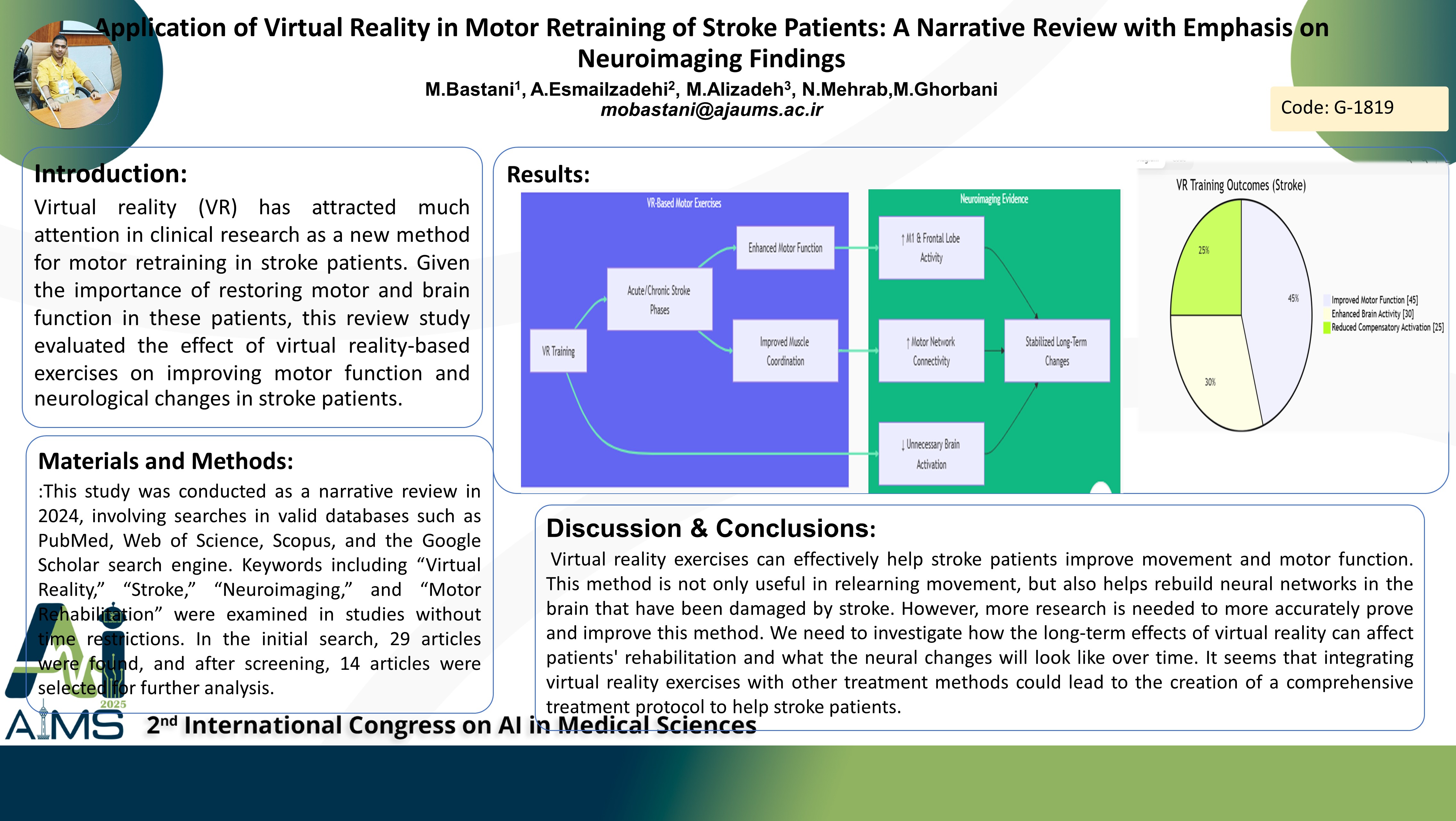Application of Virtual Reality in Motor Retraining of Stroke Patients: A Narrative Review with Emphasis on Neuroimaging Findings
Code: G-1773
Authors: Mohammad Bastani ℗, Aynaz Esmailzadeh, Mohammad Alizadeh, Nahid Mehrabi *, Mahdi Ghorbani
Schedule: Not Scheduled!
Tag: Robotics in Surgery and Care
Download: Download Poster
Abstract:
Abstract
Background and aims: Virtual reality (VR) has attracted much attention in clinical research as a new method for motor retraining in stroke patients. Given the importance of restoring motor and brain function in these patients, this review study evaluated the effect of virtual reality-based exercises on improving motor function and neurological changes in stroke patients. Method :This study was conducted as a narrative review in 2024, involving searches in valid databases such as PubMed, Web of Science, Scopus, and the Google Scholar search engine. Keywords including “Virtual Reality,” “Stroke,” “Neuroimaging,” and “Motor Rehabilitation” were examined in studies without time restrictions. In the initial search, 29 articles were found, and after screening, 14 articles were selected for further analysis. Results: Virtual reality (VR)-based motor exercises have a positive effect on motor retraining and improving motor function in stroke patients, especially in the acute and chronic phases. Neuroimaging data show that VR can increase brain activity in motor and sensory areas of the brain, including the primary motor cortex (M1) and the frontal lobe. Using fMRI and EEG, it was shown that the exercises increased neural connectivity in motor networks and improved muscle coordination. In addition, the results showed a decrease in activation of unnecessary brain areas and improved efficiency of motor performance. Long-term effects of these exercises, including stabilization of neural changes, have also been reported. Conclusion: Virtual reality exercises can effectively help stroke patients improve movement and motor function. This method is not only useful in relearning movement, but also helps rebuild neural networks in the brain that have been damaged by stroke. However, more research is needed to more accurately prove and improve this method. We need to investigate how the long-term effects of virtual reality can affect patients' rehabilitation and what the neural changes will look like over time. It seems that integrating virtual reality exercises with other treatment methods could lead to the creation of a comprehensive treatment protocol to help stroke patients.
Keywords
Virtual-Reality, Stroke, Neuroimaging, Motor-Rehabilitation, Neural-Networks
